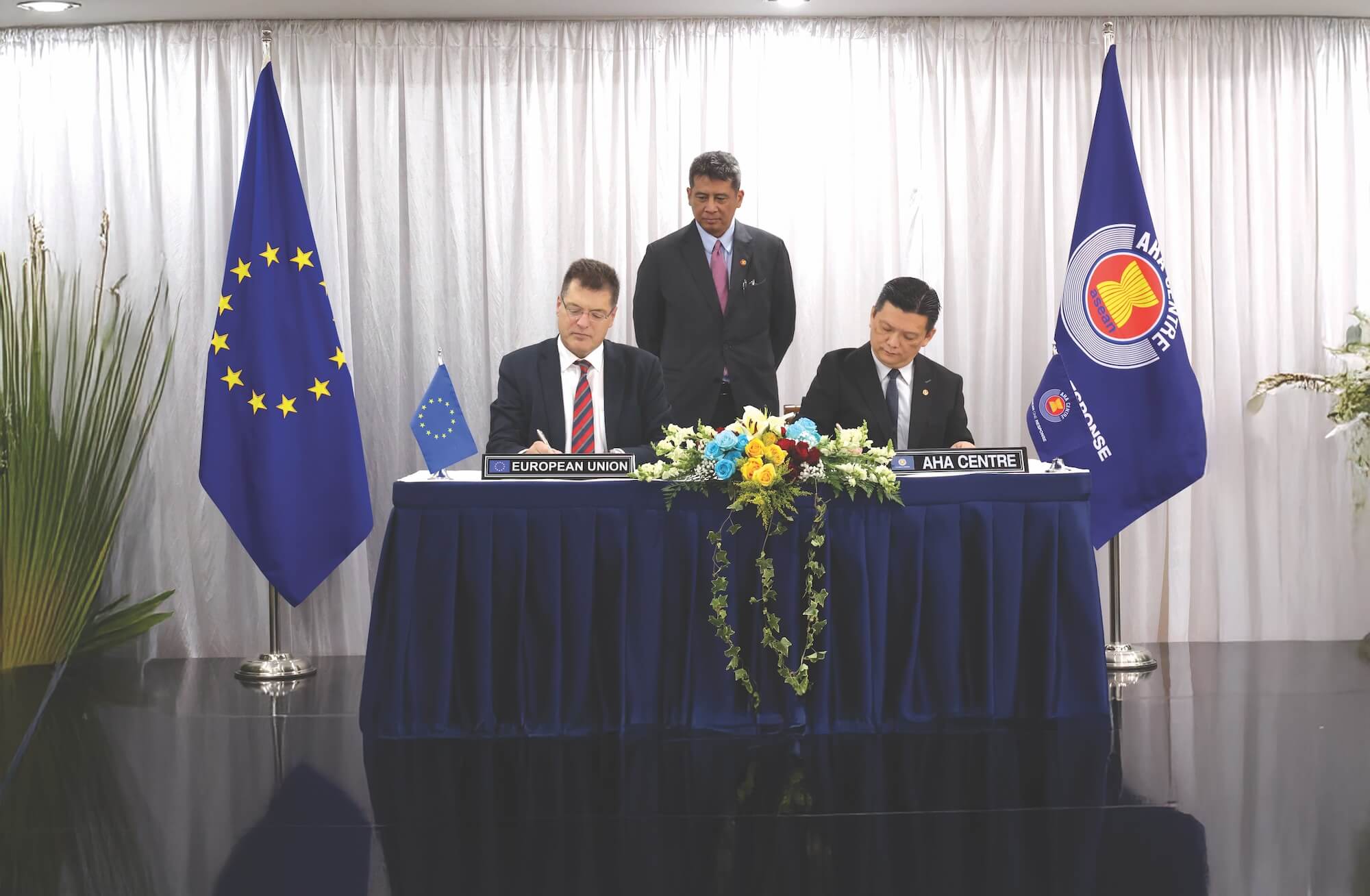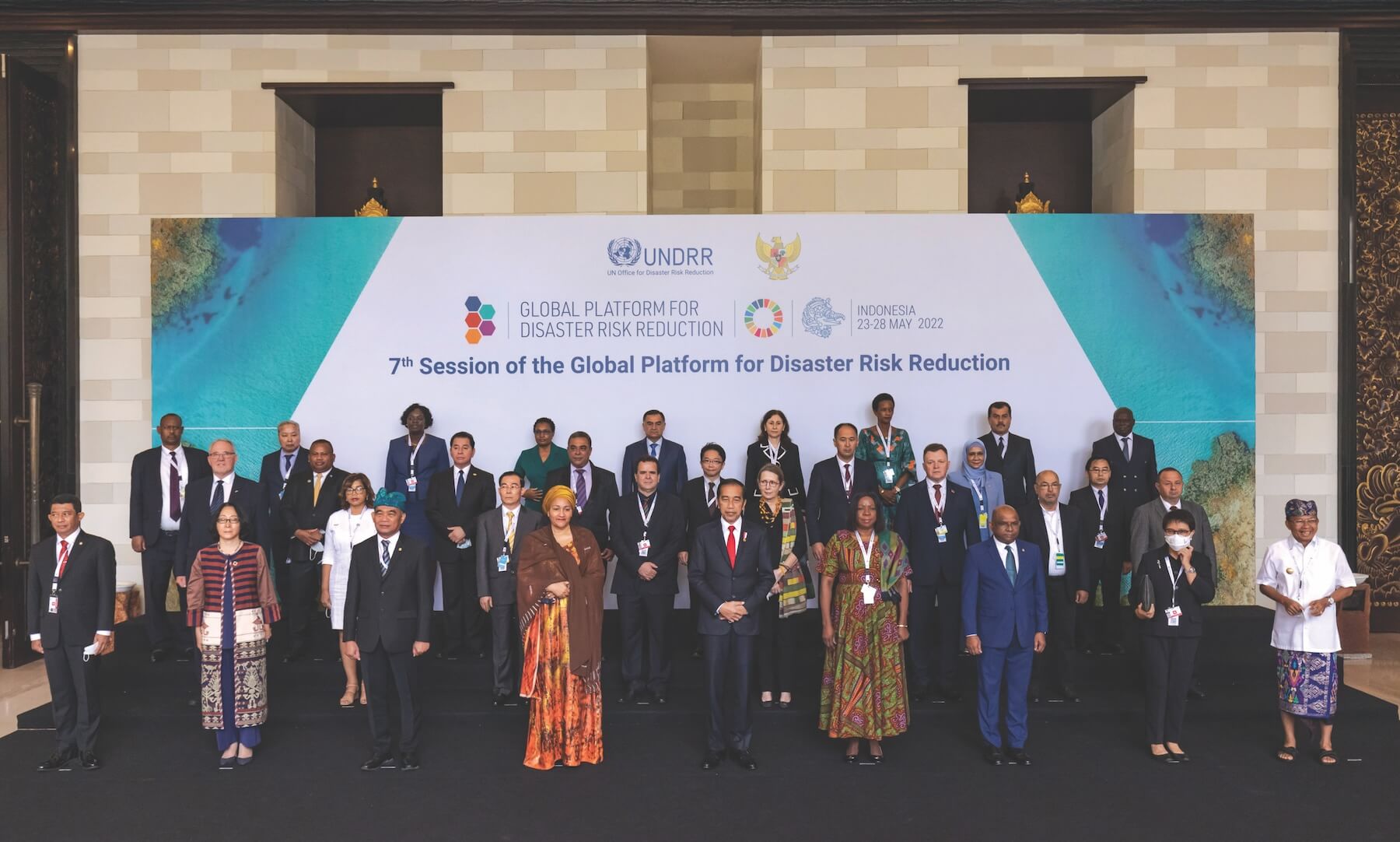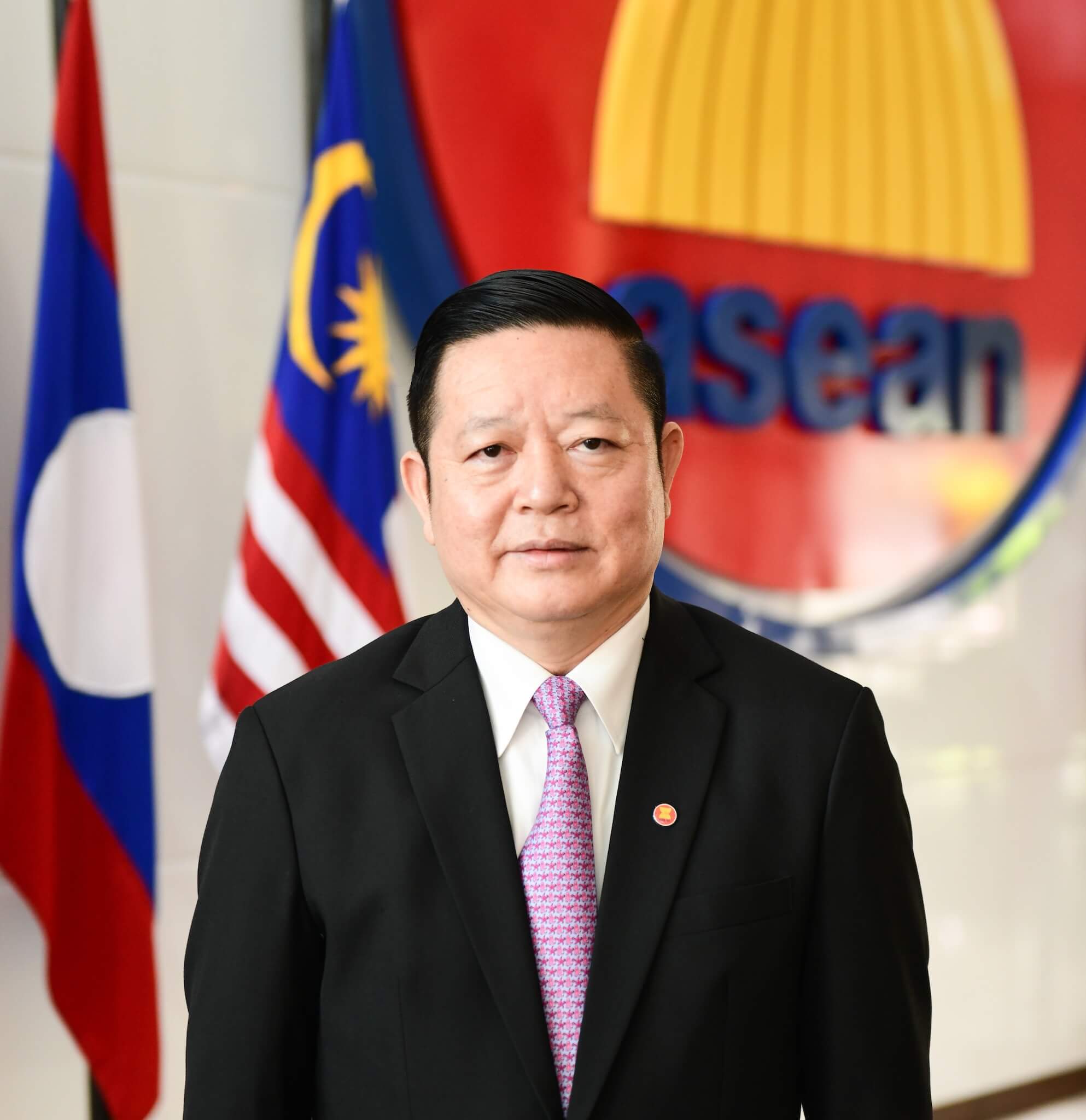



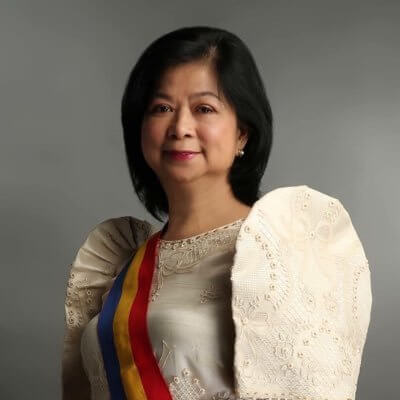
Forging a master strategy in the next 20 years for a regional grouping characterised by diverse backgrounds and confronted by complex megatrends and challenges is a herculean endeavour. However, the Leaders of ASEAN were aware of the rough road that lay ahead; they chose as their Eminent Persons diplomats who had an enduring passion for ASEAN and a wealth of experience that would guide them in forging this historic document. Two former Secretaries-General, current and former Vice Ministers, and ASEAN Senior Officials’ Meeting Leaders, along with other senior officials, comprised the august High-Level Task Force (HLTF), tasked with drawing a roadmap for ASEAN to replace the ASEAN Community Vision 2025, which is set to expire on 31 December 2025.
The Eminent Persons of the HLTF, assisted by High-Level Representatives of ambassadorial rank, did not merely write the documents. Over more than three years, they negotiated, deliberated, debated, researched, consulted with stakeholders, and envisioned the documents that they hoped would help ASEAN become the dynamic, innovative, responsive and people-centred regional grouping it aspires to be. Like the proverbial village midwives found in most rural ASEAN communities, these Eminent Persons put it upon themselves not only to oversee the birth of the ASEAN Community Vision (ACV) 2045 but also to ensure that the newborn would be reared in the principles, aspirations, and hopes of the people it serves. They also wanted it to be sustained by realistic action lines and close-knit coordination that would guarantee the realisation of the strategic goals it envisioned to achieve.
Before embarking on this formidable task, the HLTF first deliberated on the pervasive megatrends, directions, and challenges that are poised to impact the region in the years ahead. Among the sixteen challenges identified are digital transformation across all pillars; major power rivalries; food, water and energy security; poverty; widening development gaps; scarcity of funding; natural disasters; climate change; pandemics; ageing societies; migration; and inclusion of vulnerable and marginalised groups. The HLTF then submitted to the Leaders the Core Elements meant to address the issues in a comprehensive, cross-pillar coordinated manner. These core elements guided the framers of the four strategic plans in ensuring that their work is focused, well-coordinated, realistic, and cascaded down to the grassroots levels.
The antidote prescribed by all Community pillars in confronting these megatrends and issues is ASEAN Centrality, which entails ASEAN taking the lead in setting the agenda, processes, language, and modes of regional cooperation, as well as assuming a leadership role in defining the architecture in the political-security, economic, socio-cultural, and connectivity spheres. This means ASEAN should exercise leadership, especially in ASEAN-led mechanisms involving other external partners, such as the US, China, Japan, the EU, Australia, the UK, ROK, and others. A good example of such Centrality is the call by ASEAN for its external partners to find synergies and alignment between their respective Indo-Pacific/regional security architectures and global security initiatives, as well as the ASEAN Outlook on the Indo-Pacific (AOIP).1
First fruits of the HLTF
Before the completion of the ACV 2045: Our Shared Future, the HLTF produced two major first fruits—the Recommendations Paper on Strengthening ASEAN’s Capacity and Institutional Effectiveness submitted to the ASEAN Summit of 2022 under the chairmanship of Cambodia and the ACV 2045-Resilient, Innovative, Dynamic and People-Centred issued by the Leaders during the 2023 Summit chaired by Indonesia.
The institutional issues addressed by the Recommendations Paper include strengthening the capacity of the ASEAN Secretariat and the mobilisation of funding for ASEAN, clarifying the terms of reference (TOR) of emergency meetings by the Leaders to address imminent threats and challenges and the strengthening of ASEAN-led mechanisms, such as the ARF, EAS, the APT and ASEAN+1.
ASEAN Leaders launch ASEAN 2045: Our Shared Future
On 26 May 2025, the Leaders of ASEAN launched the ASEAN 2045: Our Shared Future, a compendium that includes the Kuala Lumpur Declaration on ASEAN 2045 and its accompanying documents, namely the ASEAN Political-Security Community (APSC) Strategic Plan, the ASEAN Economic Community (AEC) Strategic Plan, the ASEAN Socio-Cultural Community (ASCC) Plan, the ASEAN Connectivity Strategic Plan, and the ASEAN Community Vision 2045: Resilient, Innovative, Dynamic, and People-Centred ASEAN. The Eminent Persons were also in attendance during the historic event.
Prime Minister Anwar Ibrahim, Chair of ASEAN for 2025, described the Vision as one “anchored in realism, animated by resolve, and made possible by trust.” Meanwhile, the incoming Chair, Philippine President Ferdinand Marcos Jr., has vowed to use it as a vehicle to realise an ASEAN that is secure, peaceful, and stable, governed by the rule of law, and both prosperous and resilient.
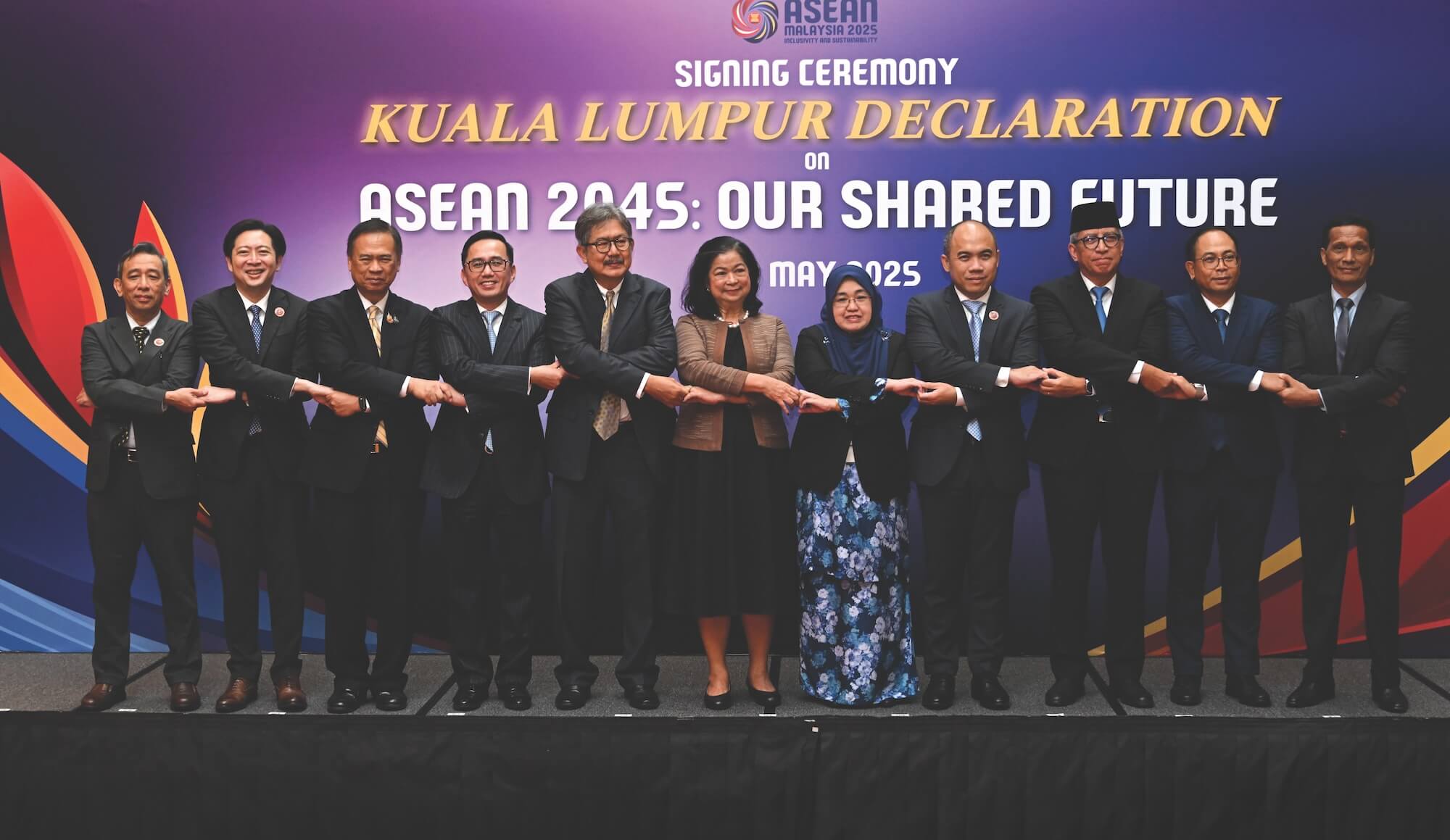
What is in the Strategic Plans?
The four strategic plans were crafted by experts in their respective areas of specialisation, in consultation with various stakeholders. The documents are named Strategic Plans because they are meant to be strategic in their approach–first defining the strategic goals and objectives, then laying out the strategic measures, accompanied by a comprehensive list of action lines or specific activities. While the timeframe is twenty years, each Pillar has the flexibility to make adjustments to timeframes as it sees fit.
The APSC Strategic Plan has nine (9) Strategic Goals aimed at ensuring that ASEAN shall continue to drive the regional architecture amid major power rivalries, especially in the Indo-Pacific domain and the challenges posed by the South China Sea issue. It defines ASEAN as an organisation committed to maintaining and promoting peace, security, and stability in the region, as well as to the peaceful resolution of disputes, employing international law, including United Nations Convention on the Law of the Sea (UNCLOS). The AEC Strategic Plan has six (6) Strategic Goals, including the ambition to realise an integrated single market and production base and engender a climate-responsive, sustainable community attuned to emerging trends and developments.
The ASCC Strategic Plan has twelve (12) Strategic Goals, among others, to promote a people-centred, people-oriented community bound by a shared ASEAN ownership and identity; to foster participatory, inclusive, sustainable, and socially cohesive community; and ensure shared prosperity, especially among vulnerable groups. All three Community pillars are committed to promoting a shared ASEAN identity and a sense of belonging.
Lastly, the ASEAN Connectivity Strategic Plan has six (6) Strategic Goals that include sustainable infrastructure, smart and sustainable urban development, digital innovation, seamless logistics and supply chain, regulatory excellence, and people-to-people connectivity.
Inclusive, participatory, and dynamic consultation with stakeholders
The TOR of the HLTF for the Post-2025 ASEAN Community Vision instructs them to “undertake a comprehensive, participatory, inclusive and holistic approach and include greater engagement and consultations” with the various stakeholders of ASEAN.
Thus, throughout its three years of existence, the HLTF held consultations with ASEAN organs, including the ASEAN Intergovernmental Commission on Human Rights (AICHR), the ASEAN Institute for Peace and Reconciliation (ASEAN-IPR), and the ASEAN Foundation. It held a dialogue with the Leaders of ASEAN in Labuan Bajo, Indonesia, in 2023 to determine their pulse and directives. Think tanks across pillars were also consulted, and these included the Institute of Southeast Asian Studies (ISEAS), S. Rajaratnam School of International Studies (RSIS), Economic Research Institutefor ASEAN and East Asia (ERIA), and ASEAN Business Advisory Council (ASEAN-BAC). Legislative and local government bodies, such as the ASEAN Inter-Parliamentary Assembly and the ASEAN Mayors and Governors Forum, also contributed their inputs into the Vision. Women, youth, and other marginalised groups also made known their calls to be included and even prioritised in the various strategic plans in several interface meetings with the HLTF, which, in turn, heeded this clamour as can be seen in the close scrutiny of the strategic goals and measures adopted.
Now that the ACV 2045 has been launched by the Leaders, it is incumbent upon all concerned to cascade its contents, aspirations, and practical ways of implementation to the people it serves. Each Pillar has devised ingenious ways to reach out to their stakeholders, including publishing FAQs and reader-friendly surveys, devolving their respective Strategic Plans back to the people they consulted and designating the ASEAN Secretariat as the nerve centre for socialising the Vision to the people. This author also conducted a knowledge-sharing forum with the ASEAN Mayors and Governors Forum and other stakeholders, elucidating the Vision and its Strategic Plans and exhorting them to actively participate in realising its goals and aspirations. Only then can ASEAN be the dynamic, responsive, innovative, and people-centred bloc that it aspires to be.
1For further reading, please check out ASEAN Centrality: An Autoethnographic Account by a Philippine Diplomat (2021) by Amb. Elizabeth P. Buensuces




